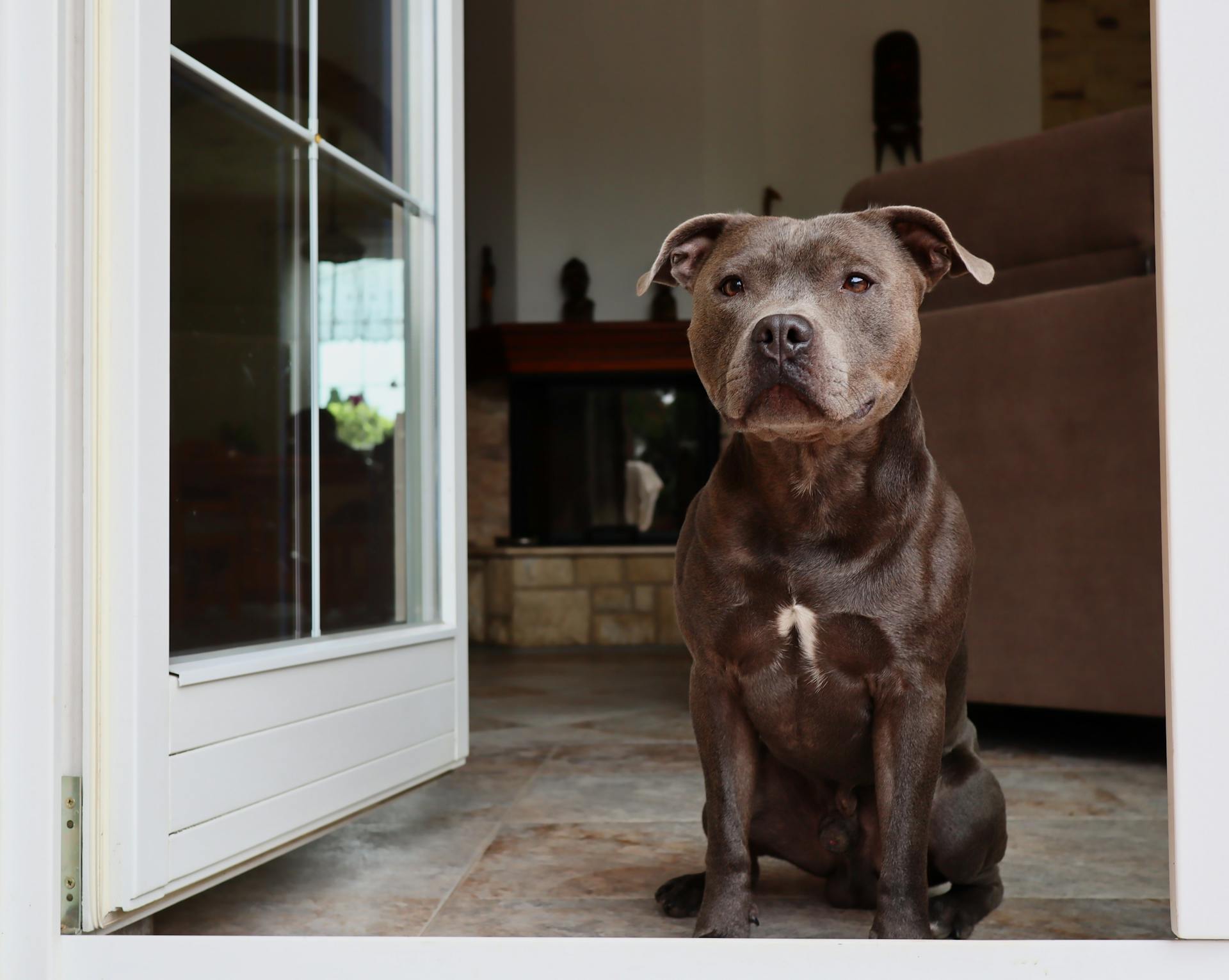
Staffy dogs, also known as Staffordshire bull terriers, are a popular breed known for their loving and loyal nature. They were originally bred in England in the 19th century for bull-baiting, but today they're beloved family pets.
One key fact about staffy dogs is that they're relatively small in size, typically weighing between 24-38 pounds and standing between 14-16 inches tall. This makes them a great fit for families living in apartments or homes with small yards.
Staffy dogs are also known for their short coats, which require minimal grooming. They're a low-maintenance breed in terms of grooming needs, which is a bonus for busy owners.
Readers also liked: How Do You Spell Shih Tzu Dog
Physical Characteristics
Staffordshire Bull Terriers have a distinctive physical appearance, with a short, broad head that's quite unique.
Their head shape is characterized by distinct cheek muscles and a wide jaw, which gives them a robust look.
Staffords typically stand between 14 to 16 inches at the shoulder, with males being just a bit taller.
Males weigh between 28 to 38 pounds, while females tip the scales at 24 to 34 pounds.
Size
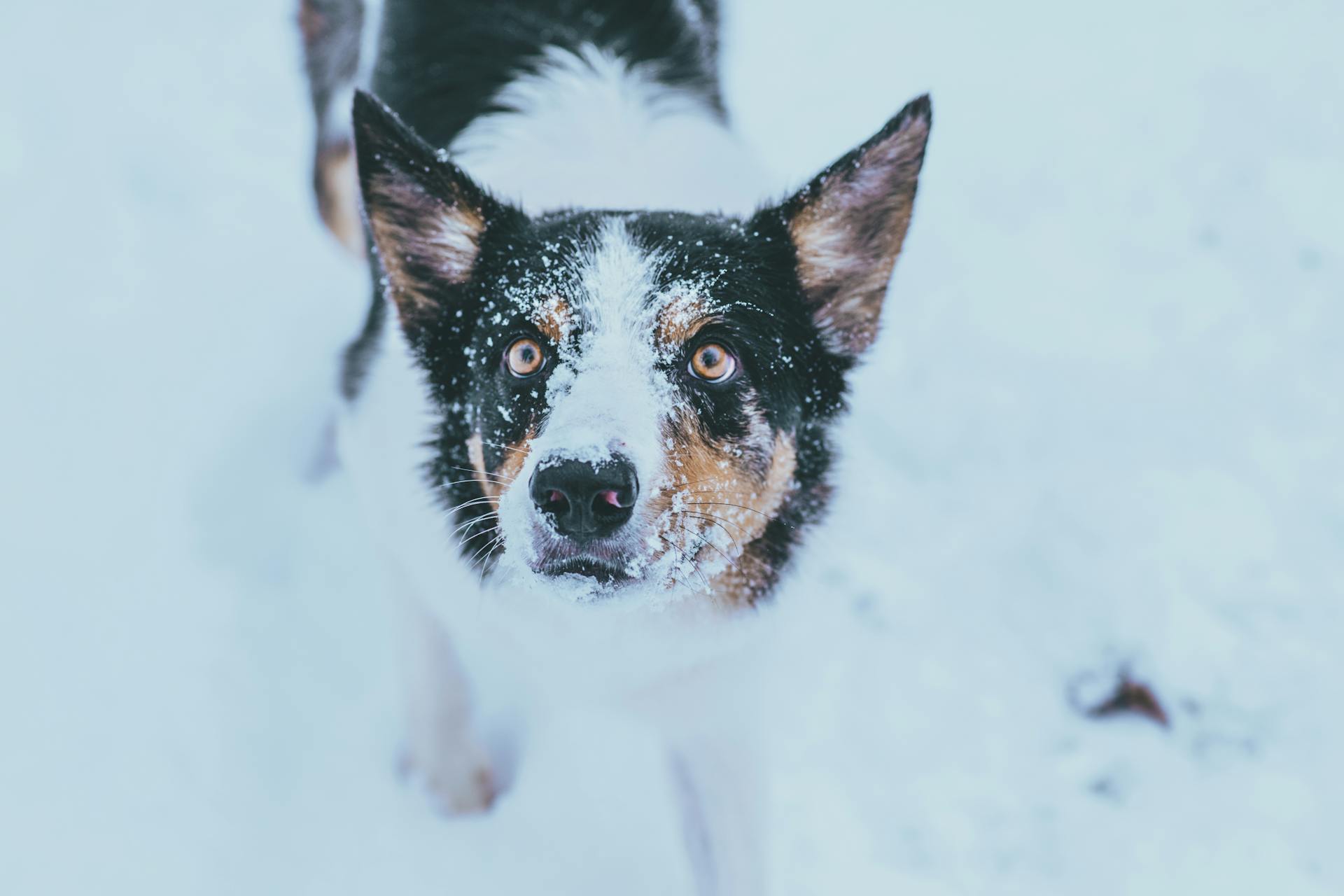
Staffords stand 14 to 16 inches at the shoulder, with males being taller.
Males weigh 28 to 38 pounds, while females weigh 24 to 34 pounds.
Coat Color and Grooming
The Staffordshire Bull Terrier's coat is a beautiful feature of this breed. It's short and smooth, lying close to the skin.
They come in a variety of colors, including red, fawn, white, black, blue, and brindle. These colors can be solid or parti-color with white.
Weekly brushing is all it takes to remove dead hairs and keep their coat clean and sleek. You can use a horsehair mitt or hound glove for this task.
Bathing is not a frequent necessity, as they have little odor and dirt brushes out easily. However, they should be bathed every 4 to 6 weeks or as needed, due to their sensitive skin.
Their nails need regular trimming to prevent overgrowth and potential pain or issues walking. Trim them once or twice a month, or as needed.
For your interest: Dog Hives Allergic Reaction Staffy Skin Bumps

Checking their ears weekly for debris, redness, or inflammation is crucial to prevent infections. Clean their ears as needed with a cotton ball and a recommended cleanser.
By starting early and making grooming a positive experience, you can lay the groundwork for easy veterinary exams and other handling when they're an adult.
Distinctive Physical Traits
The Staffordshire Bull Terrier has a distinctive physical appearance that sets it apart from other breeds. Their short, broad head is one of their most recognizable features, with prominent cheek muscles that give them a sturdy look.
Their wide jaw and short muzzle contribute to their unique facial structure, which is both strong and compact. The breed's ears are another notable feature, folding over at the tips to complete their distinctive appearance.
Temperament and Behavior
Staffy dogs are generally a delight to train, but they can be occasionally stubborn. They are intelligent and eager to please, which makes them respond well to positive reinforcement.
Their temperament is tough, courageous, and tenacious, but also playful and affectionate toward family. They are loving toward people from a young age and are never shy or snarly.
Staffy dogs are vigilant and protective of their loved ones, but they may struggle with aggression issues if they lack adequate training and socialization. They are also prone to destructive behaviors if they don't receive enough mental and physical stimulation.
One Was Highly Admired
One American Staffordshire Terrier, Sgt. Stubby, was highly admired by many in the nation, including three presidents.
His contributions to the country during World War I earned him a special place in the hearts of Americans.
Sgt. Stubby's bravery and loyalty made him a beloved companion to the soldiers he helped.
Throughout his life, he was widely recognized for his heroic efforts.
Temperament
The American Staffordshire Terrier is an intelligent breed and is generally a delight to train. They enjoy having a task to occupy themselves with, and without one, they may be prone to destructive behaviors.
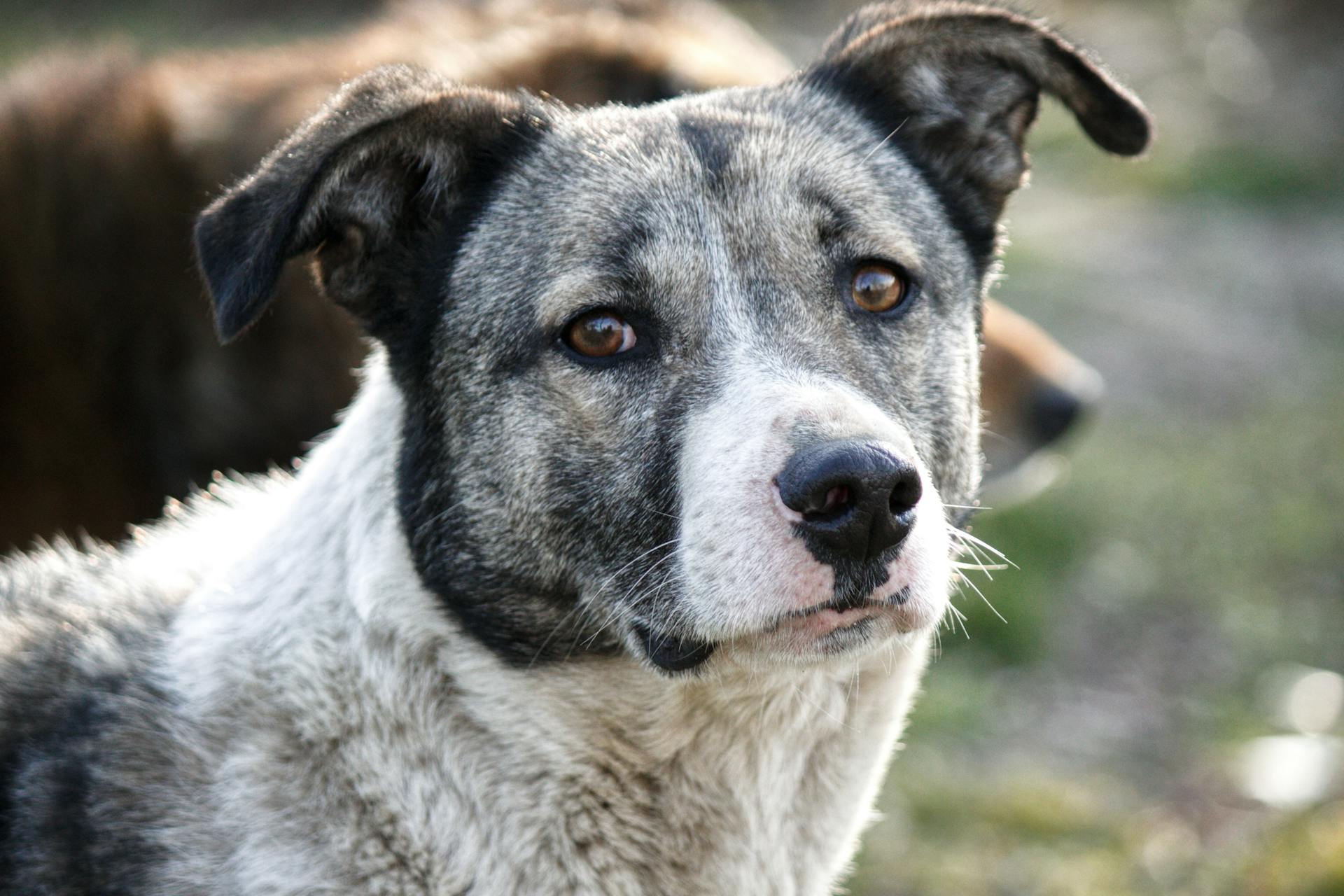
American Staffordshire Terriers are vigilant and protective of their loved ones, which is why they may struggle with aggression issues if they lack adequate training and socialization. With their family members, they are affectionate and cheerful.
They love being around their owners so much that they can be prone to separation anxiety. This can be managed or prevented entirely with a proper upbringing.
Staffordshire Bull Terriers are smart, stubborn, and quiet, but also gentle, docile, and sweet-natured. They've earned the nickname "nanny dogs" because they're usually so good with children.
These dogs love being around people and want plenty of time to play. With enough exercise and mental stimulation, they make well-behaved, loyal companions.
Some Staffordshire Bull Terriers can be reactive toward dogs they don't know. This is something to keep in mind if your dog is ever in a situation with unleashed dogs.
Staffy Bulls are playful and affectionate toward family, but can be overly exuberant and rough for some people and other pets due to their strength.
They learn easily and like to please, but can be stubborn and might resist when told to do something they disagree with.
Curious to learn more? Check out: Pros and Cons of Border Terriers
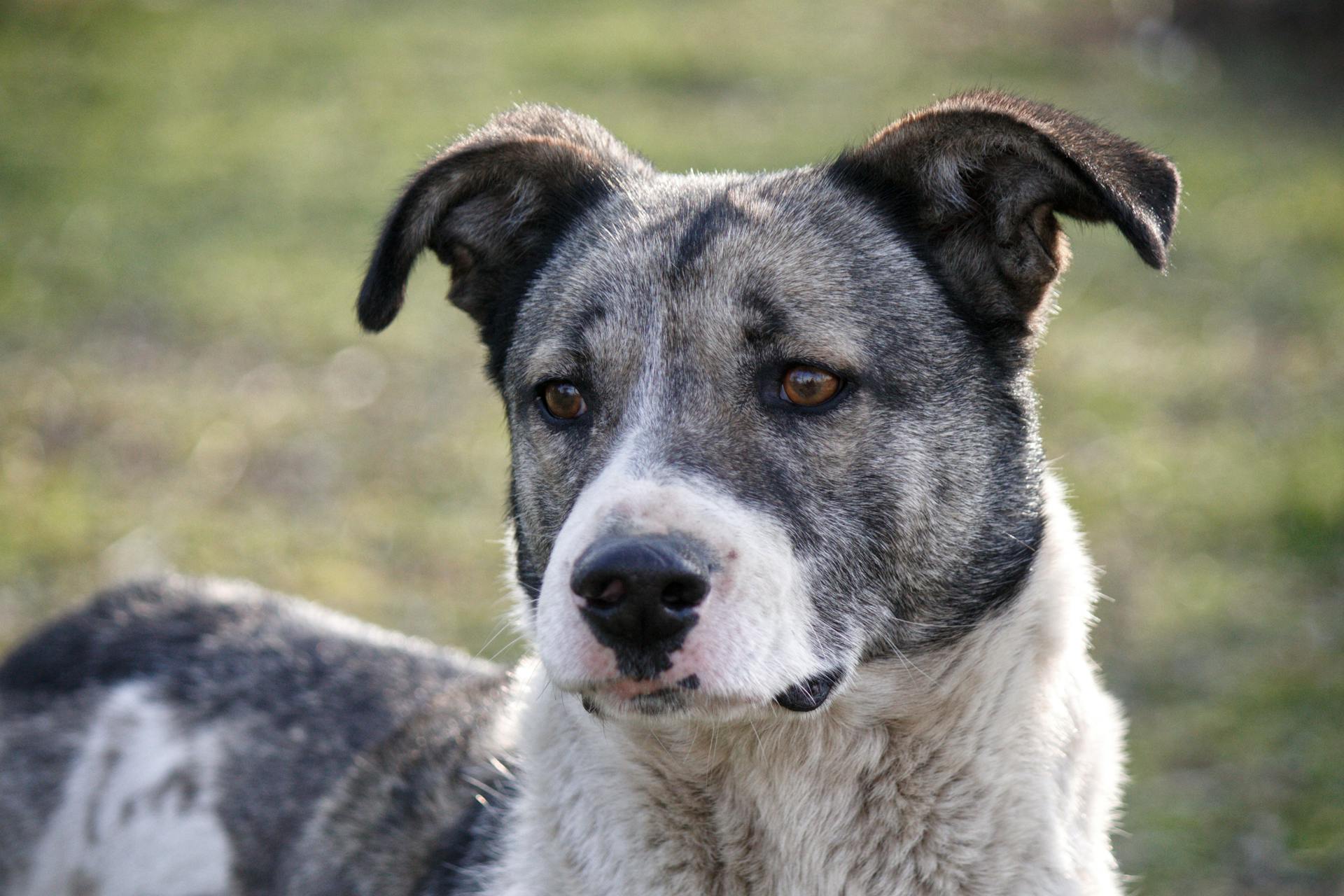
Staffordshire Bull Terriers do best as a single dog, because many will fight with housemates.
A proper Stafford is never shy or snarly, and they're loving toward people from just a few weeks of age.
They're energetic and enthusiastic in everything they do and remain on alert, even in repose.
This breed's temperament is tough, courageous, tenacious (stubborn), and curious.
A people-loving personality makes them a good caretaker of their family, but they're less likely to be protective of property.
Staffordshire Bull Terriers need early socialization – exposure to many different people, sights, sounds, and experiences – when they're young, and it should continue throughout their life.
Enrolling them in a puppy kindergarten class is a great start to socialization, and inviting visitors over regularly can also help them polish their social skills.
Readers also liked: Pictures of Norwich Terriers
Health Needs
Staffy dogs are generally a healthy breed, but like any dog, they can be prone to certain health issues. The American Staffordshire Terrier is at a higher risk of developing joint issues like elbow dysplasia and hip dysplasia.
Take a look at this: Caucasian Shepherd Health Issues
It's essential to ask your vet about joint supplements and exercise regimes to help prevent or manage these conditions. Regular exercise is crucial for Staffy dogs, and they need about an hour of physical activity daily.
Staffy dogs can also be affected by severe conditions like Cerebellar ataxia, which is a hereditary condition that can lead to severe medical issues. This condition typically shows up between the ages of 3 and 6 years.
Hypothyroidism is another condition to watch out for, which occurs when a dog's thyroid gland doesn't produce enough hormones. Fortunately, this issue can be managed, and Staffy dogs can live long happy lives.
Progressive Retinal Atrophy (PRA) is a genetic condition that can lead to blindness, but it's a painless disease. If your Staffy dog is diagnosed with PRA, you'll need to support their vision loss through consistency and training.
Here are some common health conditions to be aware of in Staffy dogs:
- Elbow dysplasia
- Hip dysplasia
- Hypothyroidism
- Cerebellar Ataxia
- Progressive Retinal Atrophy (PRA)
Care and Upkeep
Staffy dogs are known for their low-maintenance coats, but they still require regular care and attention. They need about an hour of exercise daily, which can be fulfilled through activities like tugging and weight pulling.
Their short, smooth coats lie close to the skin and shed minimally throughout the year. Dirt brushes out easily, and the coat dries quickly after a bath. This makes them a great choice for busy owners.
Staffy dogs have sensitive skin, so it's essential to use gentle canine shampoos and grooming products. They should be bathed every 4 to 6 weeks or as needed, and their nails, teeth, and ears should be checked and maintained regularly.
Exercise Needs
To keep your American Staffordshire Terrier fit, they need around 60 minutes of daily activity.
Breaking up the 60 minutes into smaller sessions is a good idea, as this will keep your dog engaged and prevent them from wearing out.
A brisk 30-minute walk twice daily may be a sufficient way to meet their exercise needs.
It's best to avoid vigorous activity directly after a meal, as this could lead to a serious and possibly fatal condition called gastric dilatation and volvulus (GDV).
Nutrition
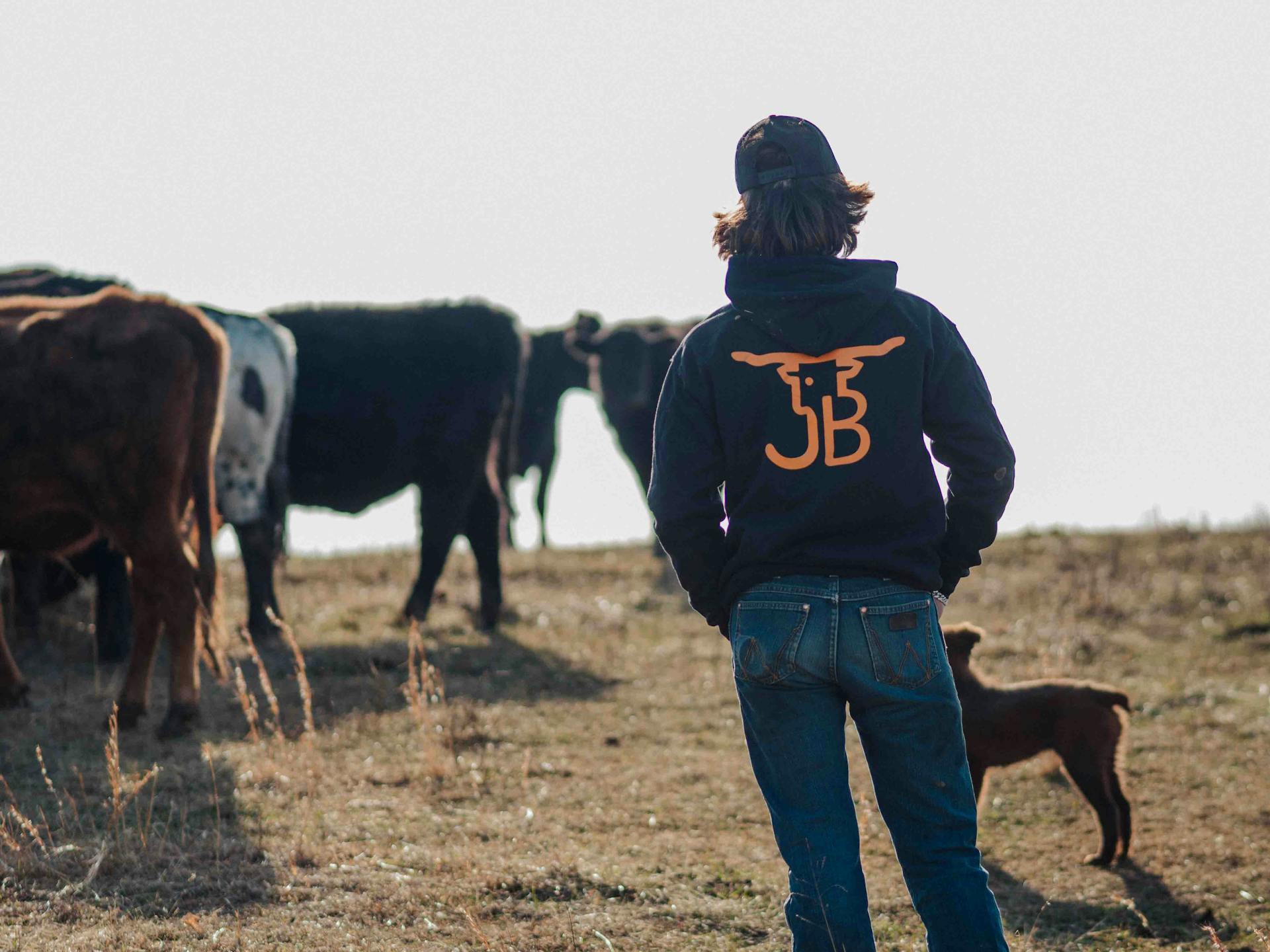
To keep your American Staffordshire Terrier or Staffordshire Bull Terrier in top shape, it's essential to provide them with high-quality dog food that meets their nutritional needs. Look for AAFCO-certified dog food with an animal protein source as the first ingredient.
Feeding your dog twice a day, rather than leaving food out all the time, can help prevent overeating and maintain a healthy weight. You should be able to see a waist when looking at your dog from above.
Monitoring your dog's food portions and reducing them if they gain weight is crucial to preventing obesity. Giving too many treats in addition to regular meals can contribute to weight gain.
Joint issues are common in American Staffordshire Terriers, so consider adding joint supplements to their diet. Omega-3 fatty acids can also benefit their joints, as well as their skin and coat health.
The amount of food your dog needs depends on their size, age, build, metabolism, and activity level. A highly active dog will need more food than a less active dog.
Care and Upkeep
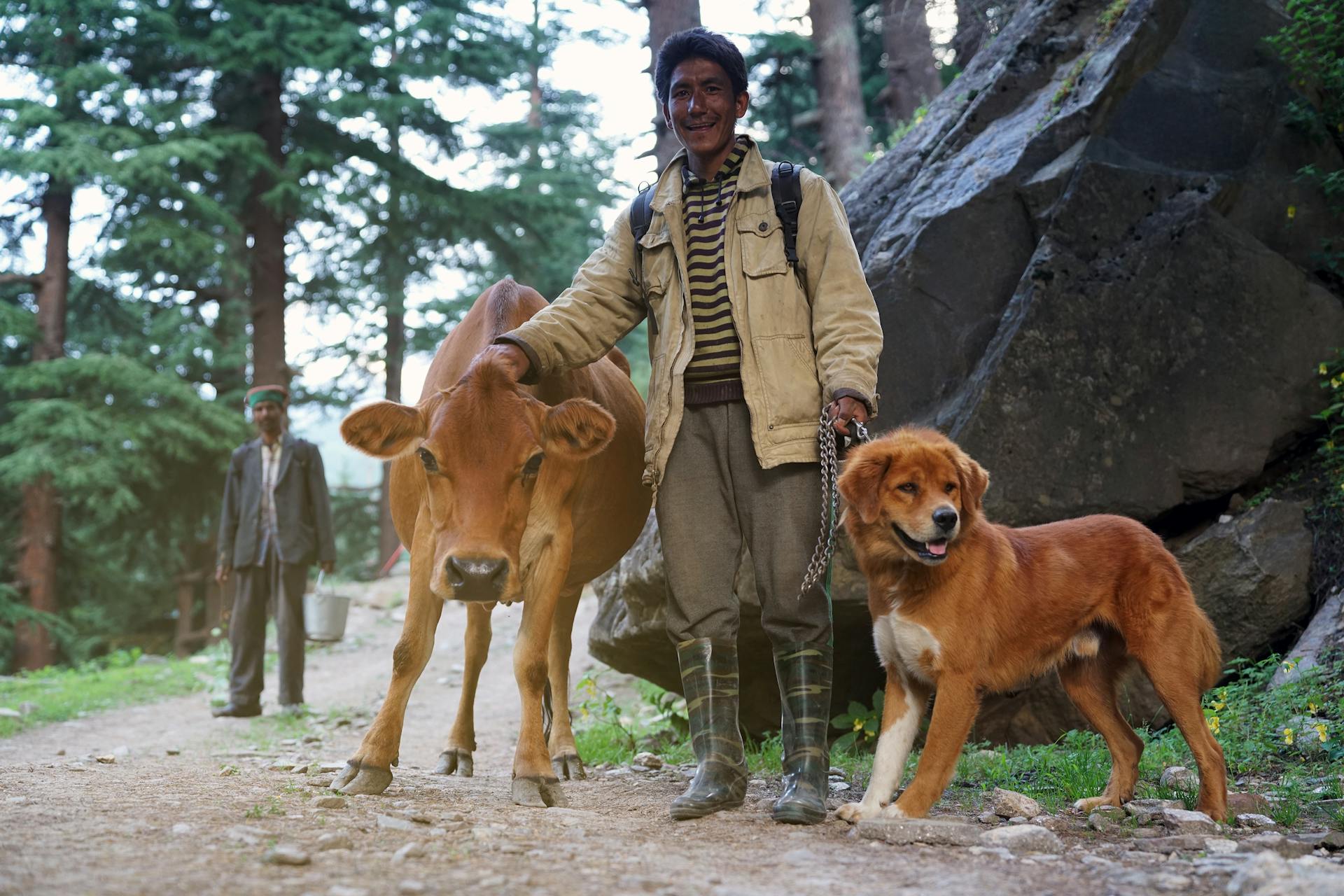
Staffordshire Bull Terriers are relatively low-maintenance when it comes to grooming. They have a short, smooth coat that lies close to the skin.
Their coat sheds annually, but hair loss is minimal throughout the year. Dirt brushes out easily, and the coat dries quickly after a bath.
To keep their coat clean and sleek, a weekly brushing with a brush or a horsehair mitt is usually all it takes to remove dead hairs. Regular nail trimming is also a must for Staffordshire Bull Terriers to prevent pain and walking issues.
Their sensitive skin requires careful consideration when purchasing canine shampoos or other topical grooming products. They should only be bathed every 4 to 6 weeks or as needed.
Daily nail care is crucial, with trimming once or twice a month or as needed to prevent overgrowth. Short nails keep the feet in good condition and prevent getting caught in the carpet.
See what others are reading: What Can You Feed Dogs Instead of Dog Food
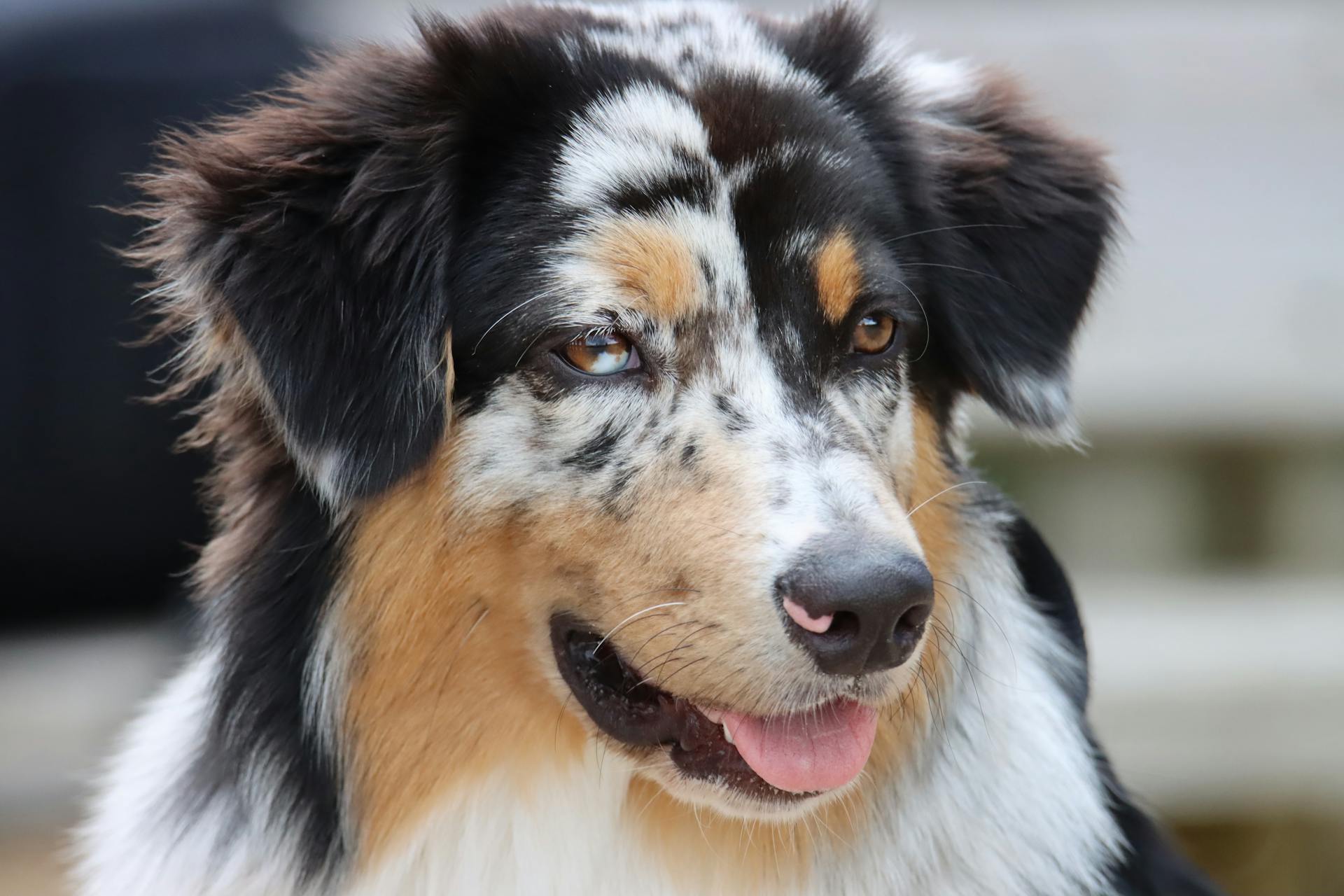
Dental hygiene is also essential, with brushing their teeth at least two or three times weekly to remove tartar buildup and accompanying bacteria. Brushing daily is even better.
Weekly ear checks are necessary to ensure there's no debris, redness, or inflammation. Cleaning the ears as needed with a cotton ball and a cleanser recommended by the breeder or veterinarian is also important.
Frequently Asked Questions
What are the best things about Staffies?
Staffies are known for their friendly, sociable, and good-natured personalities, making them great family pets. With proper training and socialization, they can be excellent with children and loving companions.
What are the disadvantages of a Staffy?
Staffordshire Bull Terriers can be high maintenance due to their high energy levels and require regular exercise and mental stimulation to prevent destructive behavior. They also have a potential for aggression towards other dogs if not properly socialized.
Sources
- https://www.akc.org/dog-breeds/staffordshire-bull-terrier/
- https://www.dogster.com/dog-breeds/american-staffordshire-terrier
- https://dogtime.com/dog-breeds/staffordshire-bull-terrier
- https://www.wisdompanel.com/en-us/dog-breeds/staffordshire-bull-terrier
- https://www.britannica.com/animal/Staffordshire-bull-terrier
Featured Images: pexels.com


